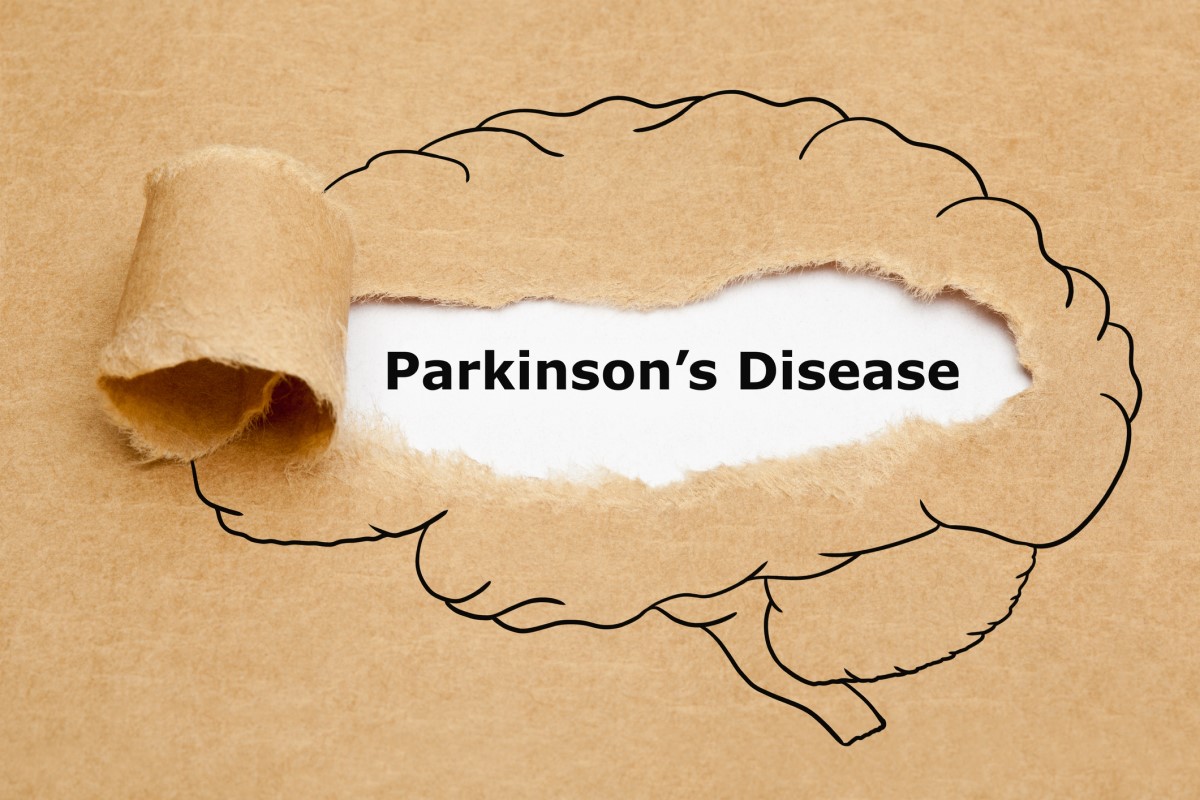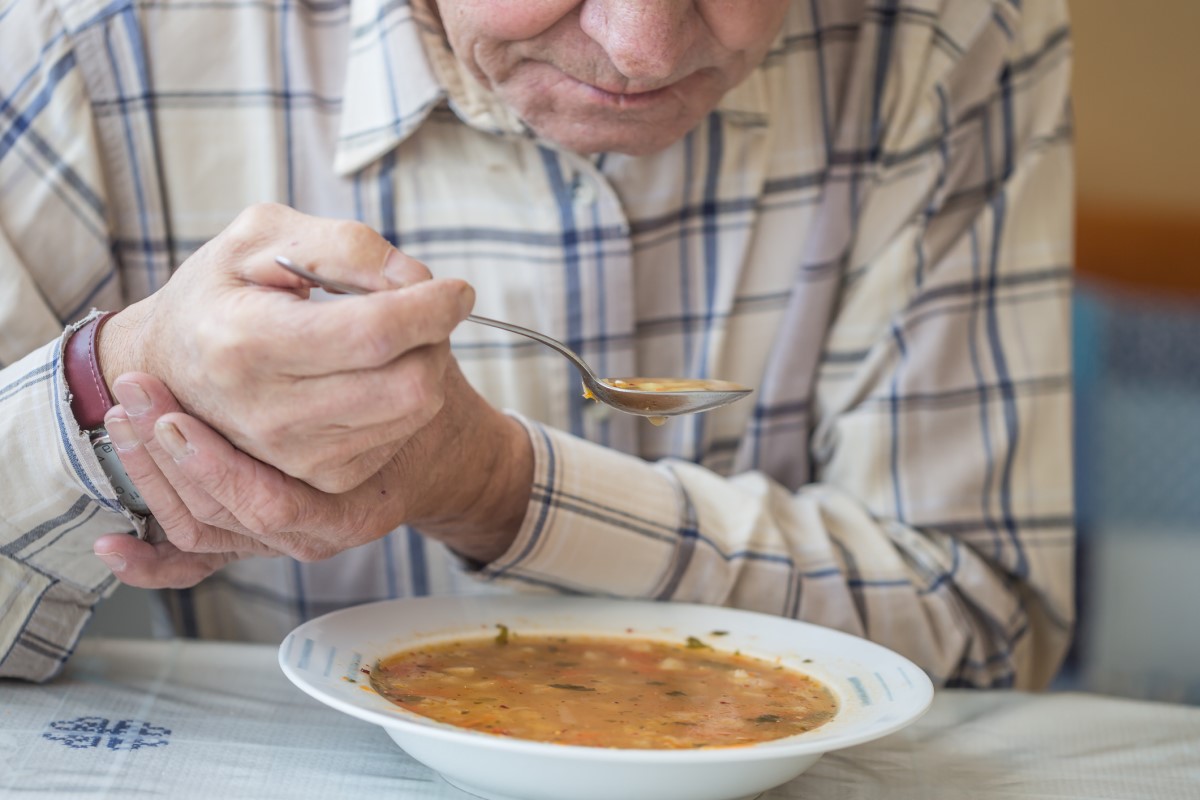- pubmed.ncbi.nlm.nih.gov Diagnosis and treatment of Parkinson's disease, an overview by Melissa J. Armstrong, MD, MSc; Michael S. Okun, MD
- pubmed.ncbi.nlm.nih.gov Parkinson's disease: a review of mechanisms and models by William Dauer and Serge Przedborski, PhD.
- onlinelibrary.wiley.com Parkinson's disease: R. Balestrino and A.H.V. Schapira
- solen.sk - Functional connectivity of the basal ganglia
- Clinical Neurology,(Zdeněk Ambler, Josef Bednařík, Evžen Růžička, collective), ISBN: 9788073871574, year of publication: 2012
Parkinson's disease: what are its causes, symptoms and stages?

Parkinson's disease is a chronic progressive disease of the nervous system.
Most common symptoms
- Feeling of heavy legs
- Speech disorders
- Constipation
- Depression - depressed mood
- Dementia
- Muscle stiffness
- Sweating
- Memory disorders
- Muscle cramps
- Tremor
- Fatigue
- Anxiety
- Confusion
- Increased saliva production
- Increased watery eye
Characteristics
In the past, it was also known as 'tremor paralysis', a name given by the English physician and palaeontologist James Parkinson in 1817.
At the time, however, he had no idea of the actual causes of the disease. Instead, he mistakenly believed it was a spinal cord injury.
Shortly after Parkinson, other historically important physicians and scientists emerged, such as the German scientist and diplomat Wilhelm von Humboldt and perhaps the most famous French neurologist, Jean-Martin Charcot. Charcot even expanded on the observed symptoms and named the definitive disease Parkinson's disease in honour of its discoverer.
Charcot was even able to treat the disease, specifically with the herb St John's wort, which contains atropine. This substance has a depressant effect on the autonomic nervous system. In this way, he was able to suppress, at least for a short time, the tremor in his patient.
As early as the Middle Ages, however, skilled herbalists treated the disease with a legume called Mucuna pruriens. Later, scientists discovered that the seeds of this plant contain a natural form of L-dopa, the active ingredient in today's modern Parkinson's drugs.
Parkinson's disease is the most common neurodegenerative motor disease.
It is a chronic progressive disease of the nervous system, manifested by a characteristic movement disorder called extrapyramidal hypokinetic-rigid syndrome.
This disability arises as a result of degenerative death of nerve cells in the brain, specifically in the part called the substantia nigra.
The death of these cells leads to a lack of dopamine in the basal ganglia, which are responsible for the execution and coordination of movements, learning and thinking.
The main motor symptoms of Parkinson's disease are tremor (tremors), rigidity (stiffness), bradykinesia or akinesia (slow movements or difficulty initiating movement) and body instability. However, the clinical picture also includes other motor and non-motor symptoms.
In addition to the loss of dopaminergic neurons, other brain structures such as the nuclei in the brainstem, the white matter beneath the cerebral cortex and the cerebral cortex itself are damaged.
These changes cause a deficiency of various chemicals that mediate nerve transmission (neurotransmitters).
Such damage is responsible for other symptoms of Parkinson's disease, such as autonomic symptoms, sensory symptoms, thought disorders, behavioral disturbances, and more.
The incidence of Parkinson's disease is approximately 1 to 2 cases per 1 000 inhabitants per year. In the age group over 60 years, it is 1 case per 100 inhabitants, with a 10-fold increase in incidence with increasing age. Age is therefore the most important risk factor. Approximately 10% of Parkinson's patients are under 40 years of age.
The male sex represents an intermediate risk, with a ratio of 1.2:1 compared to women.
A higher prevalence is observed in Indo-Europeans compared to Africans and Asians. Rural living and drinking well water have also been described as risk factors.
Some chemicals, such as MPTP in heroin or certain pesticides or insecticides, are toxic to nerve cells in the substantia nigra, causing their early degeneration.
Exposure to these chemicals can cause the so-called atypical form of Parkinson's disease even at a young age.
No association of Parkinson's disease with education, diet, employment, vaccinations, alcohol intake or contact with animals has been shown.
Family history is an important risk factor. The relative risk for first-degree relatives, i.e. children or siblings, increases approximately twofold to threefold. The familial form of Parkinson's disease accounts for 5 % to 15 % of cases.
Cigarette smoking and coffee drinking are considered to be protective factors. Specifically, a 60 % lower incidence has been observed in smokers and a 30 % lower risk in coffee drinkers.

Causes
The function of dopamine in the human body
Dopamine is naturally produced in the human body and belongs to a group of so-called catecholamines. It is a precursor of other important hormones, noradrenaline and adrenaline.
Dopamine has several functions. It is a neurotransmitter or neurohormone that has a predominantly inhibitory (blocking) function in the brain.
Dopaminergic neurons in the brain are located in the so-called basal ganglia, specifically in the nigrostriatal system.
The basal ganglia have a wide range of functions in the brain. In particular, they have sensorimotor, cognitive and emotional-motivational functions. Among the main roles of the basal ganglia is learning. They program the interplay of movements and behaviour.
A balance between inhibition of nerve excitations (dopamine) and excitation (other neurohormones and pathways) is maintained to maintain normal thought, behavior and motor function of the body.
The second site of action of dopamine is the so-called mesocortical system in the brain, which is responsible for the perception of fear, pleasure, joy and addiction.
In Parkinson's disease, dopamine deficiency occurs in all of the above areas. Characteristic symptoms result from the site of action and the deficiency.
Destruction of dopaminergic cells in the brain
Damage to these cells occurs as a result of a number of reactions. Among the most important are oxidative stress with the formation of free radicals and reactive forms of iron, which are directly toxic to the cell.
Another pathological cause is the accumulation of alpha-synuclein. Alpha-synuclein is a protein involved in the plasticity of nerve connections - synapses. In the familial form of Parkinson's disease, the gene for alpha-synuclein is mutated.
This creates a defective protein that tends to aggregate. The resulting alpha-synuclein fibres accumulate in so-called Lewy bodies.
The alpha-synuclein itself, without the genetic mutation, can also have a toxic effect on cells. This is due to its specific shape and properties.
It tends to fold incorrectly. It becomes insoluble and tends to form aggregates that accumulate and form clumps inside cells.
The intermediate products of this process are toxic. They damage vital functions and structures of cells, such as the mitochondria, through which the cell breathes, or the cell membranes, which enclose the cell and serve to receive, excrete and protect it.
This is how neurons degenerate.
The alpha-synuclein tends to spread through the neurons to the whole brain. The mechanism of this transmission is probably the basis of the continuous progression of the disease.
The accumulation of alpha-synuclein also underlies other degenerative diseases, such as some dementias (Lewy body dementia, Alzheimer's disease), Down syndrome, multisystem atrophy and others.
Parkinson's disease is caused by many other gene mutations, the most common being mutations in the gene for the protein parkin or ubiquitin-C-hydrolase, which have a protective function in the brain.
When the gene is disrupted, the protein is damaged and is unable to perform its protective function in the cells. The cells therefore die more easily and quickly.
Symptoms
In some patients, only olfactory disturbances and REM sleep disturbances can be observed.
Depression is another common symptom of the early stages of the disease.
Motor symptoms appear only after compensatory mechanisms have been exhausted, when dopamine levels fall below 50-30% of normal.
Early in the disease, symptoms are atypical, e.g. joint and muscle pain. This often leads to misdiagnosis, e.g. joint capsule inflammation.
Later, a typical set of symptoms develops:
- hypokinesia (limitation of range of motion) and associated manifestations of bradykinesia (slowing of movement) and akinesia (impaired initiation of movement)
- rigidity (stiffness of muscles and joints)
- resting tremor
- postural disturbances
Symptoms usually appear on only one side of the body, in both the upper and lower limbs. As the disease progresses, they move to the other side of the body.
Hypokinesia
Manifest predominantly on the fingers of the hands. Therefore, the patient initially has difficulty with dexterity in daily activities such as hygiene, eating, dressing. Later, he has difficulty turning in bed and requires assistance.
Other hypokinetic symptoms include:
- reduced ability to write (micrographia).
- slurred facial expressions (hypomania)
- loss of upper limb swing movement when walking (loss of synkinesis)
- silent and monotonous speech (hypophonia and aprosodia)
- unintelligible articulation during rapid speech (dysarthria and tachyphemia)
- repetition of last syllables or words (palilalia)
Rigidity
Initially, rigidity manifests itself as joint and muscle pain. It mainly affects the muscles of the arms and legs.
Patients have difficulty extending their limbs. They hold their limbs bent close to the body, for example at the elbow. They may also have their neck bent towards the chest. Rigidity is present especially at rest, but disappears in sleep.
Tremor
Tremor occurs in Parkinson's disease even at rest.
It begins in the fingers. It subsides with free movement and disappears in sleep. Tremor of the lower jaw, tongue and lips is less common. Head and neck tremor may be transmitted from more severe tremor of the limbs.
It is accentuated in stressful situations, mental agitation, fatigue, movement of the other limb and walking.
Read also:
Hand tremor: Can it be a harbinger of serious illness? (Causes and distribution)

Posture disorders
In Parkinson's disease, the so-called flexed posture is typical, i.e. with a forward bend of the trunk. Instability in standing, shuffling gait with small steps is also present. Patients are prone to frequent falls, which predisposes them to serious injuries and fractures.
"Akinetic stiffness" is the term for stopping, suddenly blocking movement. It is especially evident when entering narrow spaces, such as doorways, or when changing the direction of walking. There is hesitation when starting to walk and an inability to take the first step.
Parkinson's patients have difficulty walking, but are rarely confined to a wheelchair. This is not typical of the disease.
Non-motor disorders
These are symptoms from the autonomic nervous system and psychiatric disorders.
The autonomic nervous system is made up of peripheral nerves that are not controlled by the will. Its function is to regulate the internal balance of the body.
It innervates, for example, the smooth muscles of the blood vessels, the smooth muscles of the stomach and intestines, the sweat and sebaceous glands, the hormonal glands, the pupils and also controls the heartbeat.
In Parkinson's disease, this system is disrupted. This is manifested by constipation and oily and scaly skin.
In the late stages of the disease, there are also digestive problems, overproduction of saliva, increased sweating, rapid fluctuations in blood pressure, difficulty urinating, sexual dysfunction, pain and sensory disturbances.
Depression dominates among psychological disorders, affecting half of Parkinson's patients.
In addition to depression, psychiatric symptoms are common:
- disinterest
- inability to be happy
- agitation
- panic attacks
- paranoia
- hallucinations, manifested especially in the dark
- in the late stages, delirium
- learning, thinking and memory disorders
Sleep disturbance is a particularly unpleasant symptom. Insomnia is caused by poor mobility, night-time urination, breathing difficulties or restless legs syndrome.
Conversely, daytime sleep and sudden falling asleep, called sleep attacks, occur in connection with treatment.
Akinetic crisis
The most serious complication of Parkinson's disease is akinetic crisis. This is an acute dopamine deficiency that immediately threatens the patient's life.
It can be caused by sudden withdrawal of the drug or by the administration of another drug that blocks the effect of the drug against the symptoms of Parkinson's disease. It can also be caused by poor absorption of the drug, e.g. in gastric disease.
The patient is unable to swallow or breathe. Depression, anxiety, increased temperature, rapid pulse and disturbances of consciousness are present.
Diagnostics
If the clinical diagnostic criteria for Parkinson's disease are met, there is a high probability of confirming this diagnosis.
These criteria require a patient with so-called parkinsonism. This is defined by bradykinesia with resting tremor, rigidity or both.
In the case of clinically proven Parkinson's disease, patients must meet at least 2 of the 4 supporting criteria:
- Resting tremor
- dramatic improvement after dopaminergic treatment (e.g. levodopa)
- presence of dyskinesia (involuntary limb movements) induced by levodopa
- the presence of loss of olfaction or loss of cardiac sympathetic innervation demonstrated by scintigraphic imaging (an imaging test that assesses cardiac norepinephrine uptake, which depends on intact sympathetic function)
The administration of levodopa to patients with symptoms of Parkinson's disease is one of the most important tests. If a patient experiences a reduction or at least a 25% improvement in motor symptoms after administration of the drug, a diagnosis of Parkinson's disease is highly likely.
The test is performed fasting so as not to be biased by poor absorption of the drug.
Single-photon emission computed tomography (SPECT) is also available after administration of a substance that binds to the dopamine transporter before synaptic neuronal connections. A radiopharmaceutical called DaTSCAN is available.
DaT SPECT is a very accurate test (98-100% sensitivity and specificity) for detecting dopaminergic neuronal cell death in patients with parkinsonism.
A positive result confirms the degeneration of dopaminergic cells. However, it cannot distinguish between Parkinson's disease and other diseases in which dopamine deficiency also occurs, called parkinsonism (e.g. multiple system atrophy, progressive supranuclear palsy).
Magnetic resonance imaging (MRI) is usually not helpful. Specific findings on MRI can help distinguish Parkinson's disease from other parkinsonisms. However, it is not commonly used.
Course
In the first stage, motor impairment is unilateral. Intermediate stage 1.5 is the stage in which symptoms are unilateral, plus symptoms such as speech impairment, facial expressions and postural changes are present.
In the second stage, the impairment is bilateral but without balance disturbances. Again, there is an intermediate stage 2.5. It corresponds to the beginning of the balance disturbance.
The third stage is characterised by bilateral motor symptoms together with a fully expressed balance disorder with a tendency to falls.
In the fourth stage, the patient is severely disabled but is able to walk.
The patient in the fifth and final stage is bedridden or wheelchair-bound.
It is a progressive neurodegenerative disease which cannot yet be cured. The prognosis for Parkinson's disease is therefore not favourable. The survival of a patient with this diagnosis depends on many factors. The age of the patient and the rate of progression are important.
Some studies estimate the average survival time at 7-14 years, others at a minimum of 20 years.
The most common cause of death in patients with advanced Parkinson's disease is aspiration pneumonia, or pneumonia.

How it is treated: Parkinson's disease
Treating Parkinson's disease: drugs, rehabilitation and surgery
Show moreParkinson's disease is treated by
Other names
Interesting resources










